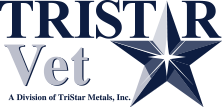A trip to the vet can be overwhelming and stressful for animals, especially when they are in pain or discomfort, often leading to fear-based aggression. Even typically calm pets may react unpredictably in an unfamiliar environment, displaying defensive behaviors such as growling, scratching, or biting. For the safety of both veterinary staff and the animal, it is essential to use proper handling and restraint techniques that minimize stress while ensuring effective examination and treatment and making future visits less stressful.
Understanding Why the Animal is Aggressive
The primary reasons animals become aggressive at the clinic include:
- Pain: If the patient exhibits any sign of pain, the odds of aggression increase. For example, even a usually complacent older dog may become aggressive if it has arthritis, a broken bone, or other injury.
- Fear: A frightened animal is always potentially dangerous. Fear aggression is common. Signs include nervous shaking, yawning, head lowering, tucked tail, and repeated lip licking.
- Lack of training: Dogs without training or animals with poor socialization are more likely to become aggressive in strange situations.
Assessing Risk
Conduct a risk assessment with every patient. Start with the animal’s history. If the animal has demonstrated aggression at past visits, make arrangements beforehand with the pet owner to minimize threats. Veterinary documentation should include the exact nature of the animal’s behavior rather than just noting “aggressive behavior” in the records.
When a new client makes an appointment, ask if the pet has ever shown signs of aggression. If the answer is affirmative, ask them what triggered the previous incidents.
If the presence of other dogs brings out aggression, try to schedule appointments for the end of the day. Depending on your setup, you may want aggressive dogs to use a separate entrance or waiting area. An alternative is having the client wait in their vehicle with their pet. You can notify them when it’s time to enter the clinic.
Tools for Handling Aggressive Animals
The various tools for handling aggressive animals are considered humane, although correct use is essential.
Examples of such items include the following:
- Muzzles: If a dog is known to be aggressive, you can ask the owner to muzzle their pet before bringing them into the clinic. When a dog is muzzled and cannot bite, everyone is safer.
- Swaddling: Restraining a frightened and aggressive cat may be accomplished by swaddling or wrapping it tightly in a towel or similar item. Cat restraint bags are designed to immobilize it while the vet performs standard procedures, such as injections. The bag contains zippers for each leg, zippers for each side of the body, and a top zipper. Velcro straps around the neck and body keep the cat secure.
- Squeeze cage: This type of cage features an internal panel that moves to restrict the pet’s ability to move and is most often used with cats.
- Sedation: Under some circumstances, sedation may prove necessary to examine and treat the pet. This should never be the initial option unless the animal has a history of attacking.
Tips for Veterinary Staff
Always remain calm and move slowly around aggressive patients. Use a neutral tone of voice.
Other tips include the following:
- Wear bite-proof gloves around animals showing any signs of aggression or pain.
- You may need to place a barrier between yourself and the dog to stay safe, such as a cage or partition.
- Keep an eye on the pet’s behavior throughout the appointment. A normally friendly animal may become aggressive when a specific body part is touched or is otherwise frightened. Dogs especially will usually give warning signs before biting. Knowing these signs, such as growling, eye contact avoidance, stiff stance, and flattened ears, allows you to act before the animal bites.
- Keep an animal with concerning behavior in a well-lit area with a nonslip surface. Move any valuable equipment out of the pet’s way.
Contact TriStar Vet for Ergonomic and Affordable Products
The animal care experts at TriStar Vet design and manufacture veterinary pet boarding products, professional grooming equipment, veterinary exam cabinets, and other innovative items for your vet clinic that are ergonomic, ultra-durable, and affordable. Your practice or animal shelter can rely on us for products that make running your business easier.

